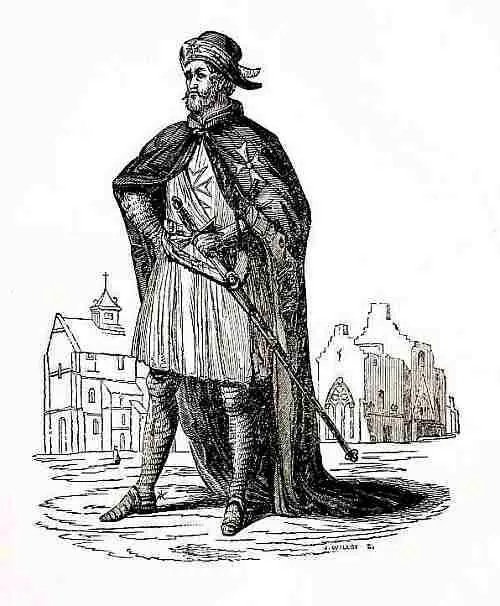James Burnes - Sketch of the History of the Knights Templars
Здесь есть возможность читать онлайн «James Burnes - Sketch of the History of the Knights Templars» — ознакомительный отрывок электронной книги совершенно бесплатно, а после прочтения отрывка купить полную версию. В некоторых случаях можно слушать аудио, скачать через торрент в формате fb2 и присутствует краткое содержание. Жанр: foreign_antique, foreign_prose, Историческая проза, на английском языке. Описание произведения, (предисловие) а так же отзывы посетителей доступны на портале библиотеки ЛибКат.
- Название:Sketch of the History of the Knights Templars
- Автор:
- Жанр:
- Год:неизвестен
- ISBN:нет данных
- Рейтинг книги:4 / 5. Голосов: 1
-
Избранное:Добавить в избранное
- Отзывы:
-
Ваша оценка:
- 80
- 1
- 2
- 3
- 4
- 5
Sketch of the History of the Knights Templars: краткое содержание, описание и аннотация
Предлагаем к чтению аннотацию, описание, краткое содержание или предисловие (зависит от того, что написал сам автор книги «Sketch of the History of the Knights Templars»). Если вы не нашли необходимую информацию о книге — напишите в комментариях, мы постараемся отыскать её.
Sketch of the History of the Knights Templars — читать онлайн ознакомительный отрывок
Ниже представлен текст книги, разбитый по страницам. Система сохранения места последней прочитанной страницы, позволяет с удобством читать онлайн бесплатно книгу «Sketch of the History of the Knights Templars», без необходимости каждый раз заново искать на чём Вы остановились. Поставьте закладку, и сможете в любой момент перейти на страницу, на которой закончили чтение.
Интервал:
Закладка:
James Burnes
Sketch of the History of the Knights Templars / Second Edition
NOTICE
The very limited number of copies comprising the First Edition of this Work were exhausted by presentations amongst the most Illustrious Individuals, – leaving only a few copies for the Author's numerous circle of friends and associates. To remove a disappointment very generally expressed by many intimate friends of the Author in this Country, he has been induced to print a Second Edition of the Work, which is now offered to the Public, with many Additions and Illustrations, – for one of which, in particular, – the plate of Sir Sidney Smith, – the Publishers are indebted to the kindness of Mr. Bentley.
Edinburgh, August 1840.
List of Chevaliers,
Whose Armorial Bearings are emblazoned upon the Gothic Gateway at the beginning of this Work, and to whom the Plate is affectionately dedicated by their Friend and Brother,
James Burnes.
INTRODUCTION
Having learned from some of those kind and esteemed Friends who lately presented to me a magnificent piece of Plate, in the name of the Free Masons of Scotland, on the occasion of my approaching departure for India, that I could not more suitably evince my sense of gratitude, than by leaving amongst them, as a token of remembrance, some Memoir of the Order of the Temple, with which they seem to consider me in some measure identified, I have, in compliance with their wish, devoted the very few hours of leisure I have had during the last month, to the preparation of the following Sketch; – and feel confident, that from an individual almost constantly engaged in arrangements for quitting his Native Country, and labouring under the most painful feelings, at the prospect of parting from his family, and those with whom he has lived in cordial terms of friendship during the last three years, nothing very finished or original will be expected; and I offer no apology, therefore, when I state, that a considerable portion of the following pages consists merely of an abridgement or reprint of an admirable, but not sufficiently known article, written by Mr. Keightly, on the History of the Templars, down to the period of the Persecution, in the Foreign Quarterly Review for 1828, followed by some Extracts from Laurie's Free-Masonry, and Mill's History of Chivalry.
The account of the present state of the Order has been taken from the official "Manuel des Chevaliers de l'Ordre du Temple," published both at Paris and Liverpool; as well as from information gathered either in foreign books, such as the "Acta Latamorum," in which all the Statutes, &c. were given to the Public in 1815, or from conversations with which I have been honoured by His Royal Highness the Duke of Sussex, Admiral Sir William Sidney Smith, General Wright, and other distinguished Templars, at home and abroad. For much of the information recorded in the Chapter on the Scottish Templars, I am under great obligations to Adam Paterson, and William Pringle, Esquires, both of whom furnished me with valuable Manuscripts. The latter of these gentlemen is the author of various papers on the Templars, in that valuable periodical, the Free-Masons' Review, nor was it until I had failed to induce him to give, in a continuous form, the result of his own researches on the subject, that I myself ventured to enter upon the present Work.
In conclusion, I have to express my warmest acknowledgments to my friend, W. A. Laurie, Esquire, Secretary to the Grand Lodge of Scotland, for many valuable notes and additions, – to whose taste and exertions this little Volume owes its appearance before the Public, and to whom personally I am indebted for many favours, which he would not wish me to particularise.
United Service Club,
Edinburgh, 28th May 1837 .
THE HOSPITALLERS

A HOSPITALLER
CHAP. I.
The Hospitallers
The natural desire to visit places which have been the scene of memorable actions, or the abode of distinguished personages, had from a very early period drawn pious pilgrims from the east and the west to view those spots which had been hallowed by the presence of the Son of God. The toils and the dangers of the journey were unheeded, when set in comparison with the bliss of pouring forth prayer on Calvary, and bathing in the waves of Jordan, whose waters had consecrated the Saviour to his holy office. And, accordingly, we find that, so early as the ninth century, there was in the valley of Jehoshaphat, near the church of the Holy Virgin, an Hospital composed of twelve dwellings, for pilgrims from the west, which possessed corn lands, vineyards, and gardens, and an excellent library, established by the bounty of Charlemagne.
In the eleventh century, when the apprehension of the approaching end of the world, and appearance of Christ to judge mankind, had once more fanned the flame of pious pilgrimage which had been previously dying away, and men were hastening to the land where they expected to meet their Lord and Judge, there was built within the walls of Jerusalem an Hospital for the reception of Catholic pilgrims. This hospital stood within a very short distance of the church of the Holy Sepulchre, and, by the favour of the Egyptian Khalif, a church, dedicated to the Virgin, and afterwards called St. Maria de Latina, was erected close by it; there an abbot and several monks, who followed the rule of St. Benedict, received and entertained the pilgrims who arrived each year from the west, and furnished such of them as were poor or had been plundered by the roving Bedouins, with the means of paying the tax exacted by the unbelievers. Decorum not permitting the reception of female pilgrims, the brethren established without their walls a convent, dedicated to Mary Magdalene, where a pious sisterhood entertained the pilgrims of their own sex. The number of the pilgrims still continuing to increase, the abbot and his monks erected a new Hospitium near their church, which they placed under the patronage of St. John, the Patriarch of Alexandria, named Eleemon, or the Compassionate. This last Hospital had no independent revenues, but derived its income from the bounty of the abbot of the monastery of the Holy Virgin, and the alms of the pious. 1 1 "The Greek Convent adjoins the Church of the Holy Sepulchre. From the terrace of this Convent, you see a spacious enclosure, in which grow two or three olive trees, a palm tree, and a few cypresses. The house of the Knights of St. John of Jerusalem formerly occupied this deserted spot." – Chateaubriand.
Интервал:
Закладка:
Похожие книги на «Sketch of the History of the Knights Templars»
Представляем Вашему вниманию похожие книги на «Sketch of the History of the Knights Templars» списком для выбора. Мы отобрали схожую по названию и смыслу литературу в надежде предоставить читателям больше вариантов отыскать новые, интересные, ещё непрочитанные произведения.
Обсуждение, отзывы о книге «Sketch of the History of the Knights Templars» и просто собственные мнения читателей. Оставьте ваши комментарии, напишите, что Вы думаете о произведении, его смысле или главных героях. Укажите что конкретно понравилось, а что нет, и почему Вы так считаете.












